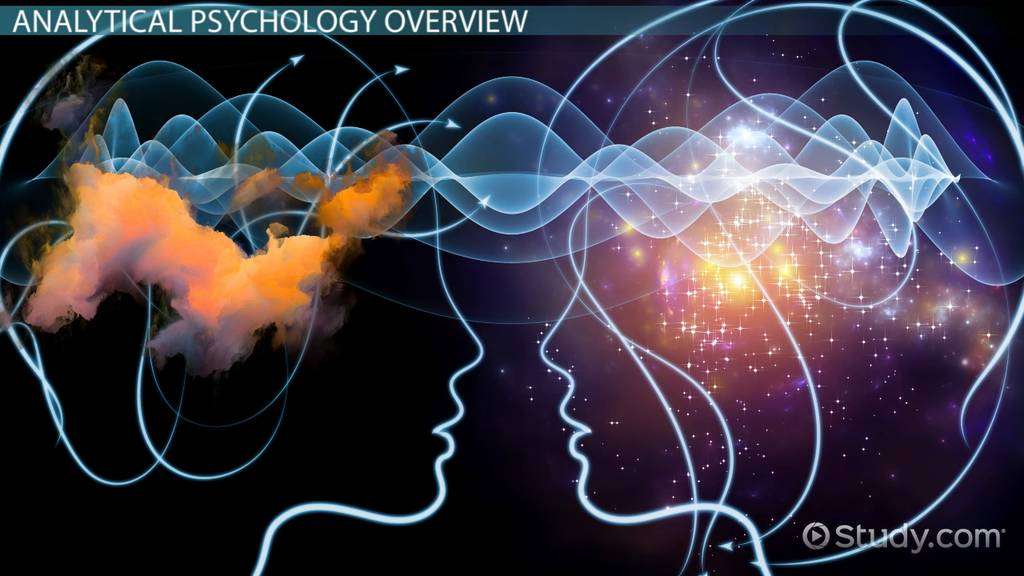History of Analytical Psychology
Sigismund Schlomo Freud and Carl Gustav Jung first met in Vienna, Austria in the year 1907. Freud was about 19 years older than Jung, who was so enthralled with his teacher it is reported they spent over 12 hours in deep conversation. About six years later in 1913, the relationship between Sigmund Freud and Carl Jung saw the former intending to pass on the mantle of the leader of psychoanalysis to the latter.
However, disagreements over some of the specifics of Freud’s theories led to Jung breaking off and forming his own school of thought. Analytical psychology has the underlying goals of the individual moving toward increased self-knowledge, searching for various meanings in their dreams as well as creative work, and making their human unconscious known.
In 1955, the International Association of Analytical Psychology (IAAP) was founded by a group of Carl Jung’s actual associates to carry on his legacy of teachings.
Analytical Theory
While Freud’s theory involved the:
- Conscious
- Preconscious
- Unconscious
Jung divided the human psyche into:
- Collective unconscious
- Personal unconscious
It is clear that both Freud and Jung taught that behavior was influenced by repressed human emotions, but Jung believed dreams reflected human aspects far beyond just desire. Furthermore, while Freud rejected both religion along with spirituality in his teachings, despite the fact he was raised in the Jewish faith, Jung embraced the supernatural instead.
One professional misfortune took place due to Jung ignoring Freud’s advice. While Freud insisted on his patients facing away from him, Jung preferred face-to-face encounters during therapy. As Freud predicted could happen, one of Jung’s clients, Sabina Spielrein, fell in love with the married Jung during their therapy sessions.
Sabina Spielrein

Neurosis
According to analytical psychology, neurosis, also known by the monikers neurotic disorder or psychoneurosis, is a comparatively mild form of mental illness which doesn’t involve completely losing touch with reality. It originates as a type of self-division between the personal unconscious and the collective unconscious. If an individual is overwhelmed by the collective unconscious, then psychosis, or a much stronger form of neurosis, may result. On the other hand, if an individual becomes disconnected from the collective unconscious, they may experience a shallow and self-absorbed life instead.
Symptoms of neurosis include:
- Anxiety
- Depression
- Fears
- Fetishes
- Phobias
According to Jung’s analytical psychology, these symptoms are kindred to dreams in that they contain some sort of concealed meaning.
Complexes and Archetypes
A complex entails a pattern of feelings along with thoughts which are suppressed. Furthermore, this complex revolves around a theme furnished by an archetype. According to Jung, an archetype can be described as a broad symbol that exists somewhere in the collective unconscious.
Examples of archetypes include:
- Anima and Animus
- Clown or Joker
- Father Figure
- Mother Figure
- The Self
- Wise Old Man
Based on Jung’s theories, when an individual identifies with a particular complex, a neurosis may result.
Shadow and Persona
The shadow in Jungian psychology is the darker and more mysterious side of a person. Its purpose is for the individual to hide their self-perceived negative qualities out of anxiety, embarrassment, or shame. This is in contrast to the persona, which is the face a person presents to others. Its purpose is for the individual to play the positive role expected of them by society. The persona is somewhat akin to the ego while the shadow is somewhat akin to the id in Freudian psychology.
Psychological Types
Analytical psychology distinguishes between introverted and extroverted individuals. Carl Jung actually published a book titled Psychological Types in 1921. Jung coined the words to describe certain individuals as either experiencing introversion or experiencing extraversion. Today persons experiencing the former are classified as introverts while persons experiencing the latter are classified as extraverts. An introvert tends to be less social and is more prone to being shy and withdrawn. An extravert tends to be more social and is often more outgoing and gregarious in nature.
A Famous Book by Carl Jung

In modern psychology, the word ambivert suggests most persons are not completely introverted or completely extroverted but instead lie somewhere in the middle of the polar opposites. The Myers-Briggs Type Indicator (MBTI) is a psychological self-test created by a talented mother and daughter team that is based on Jung’s theories. The mother was Katharine Cook Briggs and her daughter was Isabel Briggs Myers. The Myers-Briggs breaks down human personalities into 16 distinct categories.
Therapeutic Approach of Analytical Psychology
Analytical psychology is not the same thing as psychoanalysis, although many of Jung’s principles and theories are derived from Freud’s teachings. As a therapeutic approach, analytical psychology emphasizes techniques such as:
- Art therapy
- Dream interpretation
- Psychoanalytical free association
Additionally, Jung was a lifelong student of:
- Mythology
- Philosophy
- Religion
- Symbology
He believed all of this acquired knowledge could be used to help with analytical psychology therapy sessions. The ultimate goal of Jung’s therapy was for the individual to reach individuation, which Jung defined as a person reaching a greater awareness of their combined cultural and interpersonal experiences.
For example, Ayla has been experiencing anxiety and depression issues since the pandemic of 2020. In addition, she is overeating comfort foods, which is causing her to gain weight and have self-esteem issues. First, her Jungian therapist asks Ayla to keep a notebook near her bed, so she can keep a nightly dream journal. Then the therapist analyzes the dreams using various archetypes, complexes, and symbols. Second, the therapist conducts a word association game with Ayla. The therapist says a word and Ayla responds with the first word that immediately pops into her head. This helps the therapist comprehend the hidden unconscious thoughts that may be influencing Ayla’s neuroses. Third, the therapist conducts an active imagination exercise with Ayla in which she visualizes herself in various scenes. Again this helps the therapist to uncover causes from the unconscious that affect Ayla’s behaviors.
Lesson Summary
Carl Jung founded analytical psychology and was its major theoretician. Its goals are for a person to move toward wholeness via increasing self-knowledge, examining dreams as well as other creative works, and making the unconscious known. Analytical psychology is most closely aligned with the clinical approach of psychoanalysis. Jung was originally a student of Freud but split away to start his own school of thought. Jung believed the human psyche is composed of two main components that are the personal unconscious and the collective unconscious. A neurosis is a milder form of mental illness that Jung felt could be treated with his techniques. Some concepts in analytical psychology include complexes, archetypes, shadow, and persona. A complex involves suppressed feelings and thoughts, while an archetype is defined by Jung as a symbol that lies in the collective unconscious.
Analytical psychology differentiates between introverted and extroverted personality types. The Myers-Briggs test was developed by a mother and daughter who looked to expand on some of Jung’s theories of personality. Some techniques that are often helpful in an analytical psychology therapy session include art therapy, dream interpretation, word association exercises, and active imagination exercises.
Analytical Psychology

What is Analytical Psychology?
George Hogenson
Analytical psychology approaches psychotherapy and depth analysis in the tradition established by the Swiss psychiatrist, C. G. Jung. As originally defined by Jung, it is distinguished by a focus on the role of symbolic and spiritual experiences in human life, and rests on Jung’s theory of archetypes and the existence of a deep psychic space or collective unconscious. Following Jung’s original work ongoing research in this tradition incorporated findings from other disciplines and schools of depth psychology, making analytical psychology a vibrant and growing field of inquiry and therapeutic innovation.
The goal of Jungian analysis is what Jung referred to as individuation. Individuation should not be confused with simple individuality, or eccentricity. Rather, individuation refers to the achievement of a greater awareness of the factors influencing how a person relates to the totality of his or her psychological, interpersonal, and cultural experiences. Jung identified two deep levels of psychological functioning that tend to shape, color, and sometimes compromise a person’s experience of life. Along with Freud, Jung recognized the importance of early life experiences, which he referred to as personal complexes that arise from disturbances in the person’s life all of which are found in the personal unconscious. Jung also developed a theory of the personality, built around a typology that has remained one of the most influential aspects of his work. Jung’s particular insight, however, was his recognition that we are also influenced by factors that lie outside our personal experience, and which have a more universal quality. These factors, which he called archetypes, form the collective unconscious, and give shape to cultural narratives, myths, and religious phenomena. While archetypes take many forms, among the most conspicuous are the anima and animus, which define balancing or compensatory dimensions of the individual’s gender or sexual identity, the persona, which shapes a person’s presentation to others, and the shadow, which defines those aspects of a person’s life that they find unacceptable to their conscious sense of themselves. An overarching archetypal structure, which Jung referred to as the Self (https://iaap.org/wp-content/uploads/2021/03/The-Self.pdf), establishes order in the structure of the psyche and gives shape to the individual’s overall sense of their experiences.
Jung’s own life work provided the basis for these concepts, and his work still informs the process of analytical work. As a young psychiatrist, Jung worked closely with patients suffering from major psychiatric disorders. But Jung realized that under the surface these patients were attempting to construct order out of deep psychological experiences. This insight was a major point of conflict between Jung and Freud and contributed to the final break between the two in 1913. Jung’s response to the break was to undertake his own investigation of the deep psyche, which resulted in his formulation of a new approach to the analytic process, which he referred to as active imagination. Active Imagination is essentially a form of meditative practice that allows for the emergence of symbolism uniting the conscious and unconscious. This process, which Jung referred as the transcendent function, is central to the integration of the individual’s psyche. In addition to active imagination, analytical psychology continues to place emphasis on the dreams as essential elements in the dynamics of the psyche. Jung’s approach to dreams, however, is distinctly different than Freud’s classic understanding of dreams. For Jung, the manifest form of the dream is not a disguise for repressed desires, but rather a commentary by the unconscious on the present moment. Jung compares the obscurity of dreams to a text written in a foreign language, but a language that can be translated and understood. For Jung, translation of dreams or other psychic phenomena can be compared to the work of the philologist in linguistics for whom comparison to other languages, and the historical reconstruction of an unknown language gradually reveals its full meaning. Jung referred to this approach to this interpretation and translational process as a synthetic method, as distinct from Freud’s analytic method, that involved the gradual amplification of the symbolic elements through historical and other comparative associations to the material.
Jung formulated his approach to the psyche through experiences in his own life, which he would later refer to as his encounter with the unconscious, that led to a deep investigation of his own psyche resulting in the composition of The Red Book, an account of the images that formed themselves during his own process of active imagination.
Jung’s theory of the collective unconscious as a level of the psyche that is universally shared and the archetypes, which give rise to common themes in myth and religious practices throughout history, prompted Jung to investigate historical patterns that corresponded to his developing model of the psyche. Foremost among these investigations was his interest in alchemy, which Jung interpreted as a precursor to modern psychology as well as a precursor to modern science. Late in life, Jung engaged with the quantum physicist, Wolfgang Pauli, in the investigation of phenomena that were in part associated with the work of the psychological aspects of alchemy in which psychological and material states are associated with one another. These phenomena they referred to as synchronicities. Underlying synchronistic phenomena, Jung and Pauli speculated, was a profound unity within nature that they referred to as the psychoid dimension of reality. Jung associated the experiences associated with synchronicity and the psychoid with the anthropological notion of participation mystique, the felt sense of a fundamental unity within nature.
The analytic process is intended to bring these factors, both personal and collective, into consciousness, allowing the individual to see more clearly what forces are at play in his or her life. In addition to active imagination and other symbolic processes such as sand tray work, analytical psychology continues the tradition of dream interpretation, as a part of the analytic process. Unlike classical psychoanalysis, however, Jung viewed the dream as focused on the individual’s current circumstances and the course of development going forward. Implicit in Jung’s understanding of is the sense of a telos, or goal toward which one’s life can be directed. The role of the analyst is to help facilitate the individuation process and accompany the analysand on his or her personal journey. Using many of the concepts of psychoanalysis, such as transference and countertransference, but adding characteristically Jungian concepts such as active imagination, the analyst and the analysand work collaboratively to explore and enlarge the analysand’s experience and understanding of their life, and its relation to the deep structures of the psyche.

George Hogenson is a Jungian analyst in private practice in Chicago. He earned the Ph.D. in philosophy from Yale University, an MA in clinical social work from the University of Chicago, and the Diploma in Analytical Psychology from the C. G. Jung Institute of Chicago. He is the past President of the Chicago Society of Jungian Analysts, and past Vice President of the International Association for Analytical Psychology. He has published widely on the history and theory of Analytical Psychology, and lectures regularly in the United States, Europe, and Asia.




